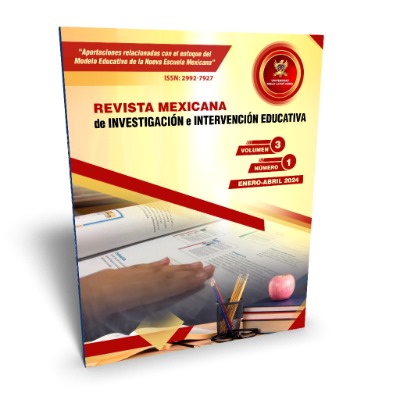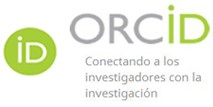Criminology and citizen participation in the development of public policies for the environmental remediation of rivers and streams in Azogues, Ecuador
DOI:
https://doi.org/10.62697/rmiie.v3i1.93Keywords:
Criminology, citizen participation, public policies, prevention, environmental remediationAbstract
The present investigation arises from the everlasting need for environmental remediation of rivers and streams in the Azogues canton and aims to demonstrate that Criminology and participation in the preparation of municipal ordinances, Development Plan and Territorial Planning, observance of the budget for environmental recovery , interest in decision-making, interest in being heard, normalization of environmental care, inclusion of claims in the political agenda, are the characteristics of citizen participation in the development of public policies, the research follows a mixed epistemological approach, the Data collection was carried out through interviews with the inhabitants of the marginal areas of the Burgay River in Azogues-Ecuador, data processing was carried out through discourse analysis and the support of statistical graphs, it was determined that 40% of the people have not participated in the preparation of municipal ordinances, 91% of them affirm that the normalization of environmental care is very necessary and 67% of the participants believe that the quality of life will be better without the presence of polluting agents in water flows. river, which demonstrates the need for more active participation of citizens in the development of public prevention policies that promote cities of peace.
Downloads
References
Aguiar, M., & Castillo, Y. (2019). Islas Flotantes Artificiales con la Especie Achira (canna indica) como alternativa para la Remoción de Cromo y Coliformes Fecales en Agua Procedente del Río Cutuchi. (Tesis de licenciatura). Universidad Técnica de Cotopaxi .
Calle, S. M., & Costales, Z. A. (2021). Participación ciudadana urbana cantonal en el gobierno local. Revista ciencias pedagógicas e innovación, 9(1), 85–91. https://doi.org/10.26423/rcpi.v9i1.453
Campillo-Alhama, C. (2010). Pensar la Publicidad Comunicación pública y administración municipal. Una propuesta de modelo estructural. Pensar la Publicidad. Revista Internacional de Investigaciones Publicitarias, 4(1), 45-62.
Cordero, P. (2020). Propuesta de restauración del ecosistema ripario y calidad del agua del río Burgay: planteamiento de un modelo conceptual. (Trabajo de titulación). Universidad Católica de Cuenca.
Diez Hurtado, A. (2023). Presupuestos municipales, participación y reordenamiento de los espacios políticos Municipal Budgets, Participation, and the reorganization of political spaces. Íconos: Revista de Ciencias Sociales 34, 27-38. https://dialnet.unirioja.es/descarga/articulo/3318584.pdf
Ecuador. Asamblea Naciona Constituyente. (2008). Constitución Política de la República del Ecuador. Registro Oficial 449. https://www.oas.org/juridico/pdfs/mesicic4_ecu_const.pdf
Ecuador. Asamblea Nacional. (2010). Código Orgánico de Organización Territoral. Registro Oficial Suplemento 303. https://www.oas.org/juridico/pdfs/mesicic4_ecu_org.pdf
Ecuador. Asamblea Nacional. (2021). Código Orgánico del Ambiente. Registro Oficial Suplemento 983. https://www.ambiente.gob.ec/wp-content/uploads/downloads/2018/01/CODIGO_ORGANICO_AMBIENTE.pdf
Idrovo, L. (2010). Factores y grado de contaminación del río Burgay. . (Trabajo de titulación). Universidad Estatal de Quevedo.
Limas, J. (2022). “Análisis de la capacidad de autodepuración del río Higueras, mediante la determinación de coliformes termotolerantes, entre Huancapallac y el puente Tingo del distrito Huánuco – 2022. (Trabajo de titulación). Universidad de Huánuco.
Obiol, E. (2003). La regeneración de playas como factor clave del avance del turismo valenciano. Cuadernos de geografía, (73-74), 121-146.
Peláez, A., Rodríguez, J., Ramírez, S., Pérez, L., Vázquez, A., & González, L. (2013). La Entrevista. Universidad Autónoma de México. de http://www.uam.es/personal_pdi/stmaria/jmurillo/InvestigacionEE/Presentaciones/Curso_10/E
Pilay, T. (2015). Presupuesto participativo para una efectiva participación ciudadana, Sinergia, 6(1).
Pino, S. L., Barros, D. V., Sisalema, L. A., Fernández, P. L., & Molina, C. D. (2021). El costo de remediación del recurso agua por contaminación de coliformes fecales en el Estero Salado, sector La Chala, Guayaquil-Ecuador. Espacios, 42(04), 102–120. https://doi.org/10.48082/espacios-a21v42n04p09
Racines, D. (2018). Análisis de la participación ciudadana en los presupuestos participativos de los gobiernos autónomos descentralizados municipales. (Trabajo de titulación). Pontificia Universidad Católica del Ecuador.
Sánchez, M. (2009). La participación ciudadana en la esfera de lo público. Espacios Públicos, 12, 85–102. http://www.redalyc.org/articulo.oa?id=67611350006
Suing, A., Barrazueta, P., & Carpio, L. (2018). Orientación al ciudadano en el “gobierno electrónico” de los municipios de Ecuador. Teknokultura. Revista de Cultura Digital y Movimientos Sociales, 15(1), 39–53. https://doi.org/10.5209/tekn.57176
Villamil Castillo, H. A. (2021). Conflictos en el ordenamiento territorial de la sabana de Bogotá. Caso minería vs. descontaminación del río Bogotá, Colombia. Revista ciudades, estados y política, 8(3), 63–78. https://doi.org/10.15446/cep.v8n3.92021
Zhindon, D. (2017). Planta de Tratamiento de Aguas Residuales de la Ciudad de Azogues. Gad Municipal Azogues.
Downloads
Published
How to Cite
Issue
Section
License
Copyright (c) 2024 Juan Carlos Cabrera-Buestán, Darwin Gabriel García-Herrera, María Diana Maldonado-Cabrera

This work is licensed under a Creative Commons Attribution-NonCommercial-ShareAlike 4.0 International License.
Authors who publish in Revista Mexicana de Investigación e Intervención Educativa (RMIIE), of Universidad Pablo Latapí Sarre agree to the following terms:
1. Copyright
Authors retain unrestricted copyright to their work. Authors grant the journal the right of first publication. To this end, they assign the journal non-exclusive exploitation rights (reproduction, distribution, public communication, and transformation). Authors may enter into additional agreements for the non-exclusive distribution of the version of the work published in the journal, provided that acknowledgment of its initial publication in this journal is given.
© The authors.
2. License
The articles are published in the journal under the Creative Commons Attribution-NonCommercial-ShareAlike 4.0 International License (CC BY-NC-SA 4.0). The terms can be found at: https://creativecommons.org/licenses/by-nc-sa/4.0/deed.en
This license allows:
- Sharing: Copying and redistributing the material in any medium or format.
- Adapting: Remixing, transforming, and building upon the material.
Under the following terms:
- Attribution: You must give appropriate credit, provide a link to the license, and indicate if any changes were made. You may do this in any reasonable manner, but not in any way that suggests the licensor endorses or sponsors your use.
- NonCommercial: You may not use the material for commercial purposes.
- ShareAlike: If you remix, transform, or build upon the material, you must distribute your creation under the same license as the original work.
There are no additional restrictions. You may not apply legal terms or technological measures that legally restrict others from doing anything the license permits.









